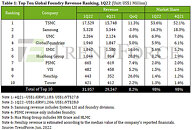
Latest PlayStation 5 Hardware Revision Receives 6 nm "Oberon Plus" SoC to shed 6% Weight
The latest CFI-1202 series hardware revisions of the Sony PlayStation 5 entertainment system receive new "Oberon Plus" SoCs built on the TSMC N6 (6 nm) silicon fabrication node, and could include several new power-management features of the kind seen in AMD Ryzen 6000 mobile-processors, which could bring down the overall weight of the console as it could shed anywhere between 200-300 grams (6.25-6.5 percent) compared to older 2021 models. The CFI-1202B is the Digital-only variant that lacks an optical drive; while the CFI-1202A is the slightly heavier model that comes with a Blu-ray ROM drive. The 6% reduction in weight may not seem like much to the end-user, but has a cumulative effect for Sony to ship them by the thousands.






























































